Growing a green, healthy lawn can sometimes feel elusive. It might feel as though you do all the right things only to have a lawn that is struggling with thin or bare spots or that isn’t as green as it should be.
So, what’s the secret to growing healthy grass?
While it’s not exactly a secret (we talk about it all the time), lawn aeration and overseeding are two of the best things that you can do for your lawn. Yet, we find that many people do not take full advantage of these vital services.
In this guide, we’ll dive into everything that you should know about aerating and overseeding a lawn so that you can make the best decisions for growing healthier grass.
Table of Contents
- Understanding Lawn Aeration
- The Importance of Overseeding Your Lawn
- The Best Time to Aerate and Overseed Your Lawn
- DIY Lawn Aeration and Seeding Tips
- Hiring a Professional for Lawn Aeration and Seeding
- Choosing the Right Lawn Care Service
- Lawn Care After Aeration and Overseeding
Understanding Lawn Aeration
In order to understand why lawn aeration and overseeding are so important for your lawn, you must understand what this service is all about (including how it works). While a lot of people have a basic idea of what aeration means, they don’t always fully understand the service or what makes it different from one company to another.
What is Lawn Aeration?
Lawn aeration is the process of making holes throughout your yard by pulling small soil plugs called cores. This is achieved with a piece of machinery called an aerator.
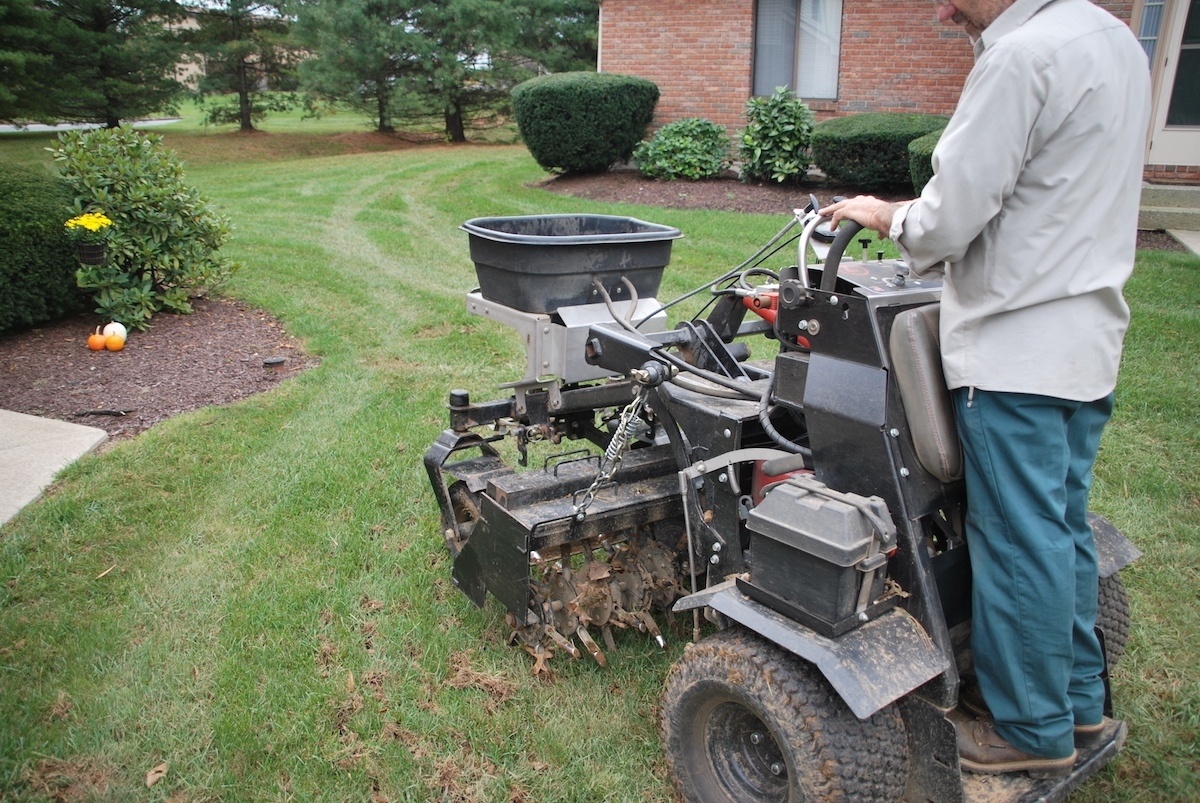
When you pull these cores of soil, you are helping to break up compaction by allowing more oxygen, water, and nutrients to penetrate deep into the soil. This is important as it will create a more favorable environment for the lawn’s root system to grow.
The cores of soil that are pulled from the lawn are left there to naturally decompose, which delivers important nutrients into the soil during the process.
What Does Aeration Do for a Lawn?
There are a lot of benefits of lawn aeration, but people still question how much it will actually transform their lawns.
In fact, sometimes, people ask us, Does lawn aeration really work that well?
While it is certainly not a magic bullet cure and it isn’t going to restore a struggling lawn overnight, it is definitely a highly effective service.
Let’s look at some of the key benefits.
Lawn aeration can help improve drainage due to compacted soil, break up thatch, and grow a thicker and healthier lawn. Over time, the thicker and healthier that your lawn is, the better it will perform. That includes beginning to naturally choke out weeds and even fight back against problems like lawn pests or disease.
If you’re investing in other lawn care services like lawn fertilization and weed control, lawn aeration will also help you to get the maximum benefit out of these. Many times, products need to penetrate down to the root zone in order to be most effective. But if your soil is heavily compacted, that’s not going to happen.
Fortunately, this is where lawn aeration can help.
With so many benefits to this service, it’s something that makes a lot of sense. It can honestly be the difference between a so-so lawn and one that is performing its best.
The Importance of Overseeding Your Lawn
You should also overseed your lawn at the time of aeration. That’s because these two services work hand-in-hand. Seeds require seed-to-soil contact in order to germinate and this is best achieved when the grass seed falls into the holes created during aeration.
What is Lawn Overseeding?
Overseeding a lawn is merely the process of distributing new grass seed throughout your lawn. As we mentioned above, this is best done at the time of aeration since the seeds will fall into the holes and provide optimal seed-to-soil contact that is needed for growth.
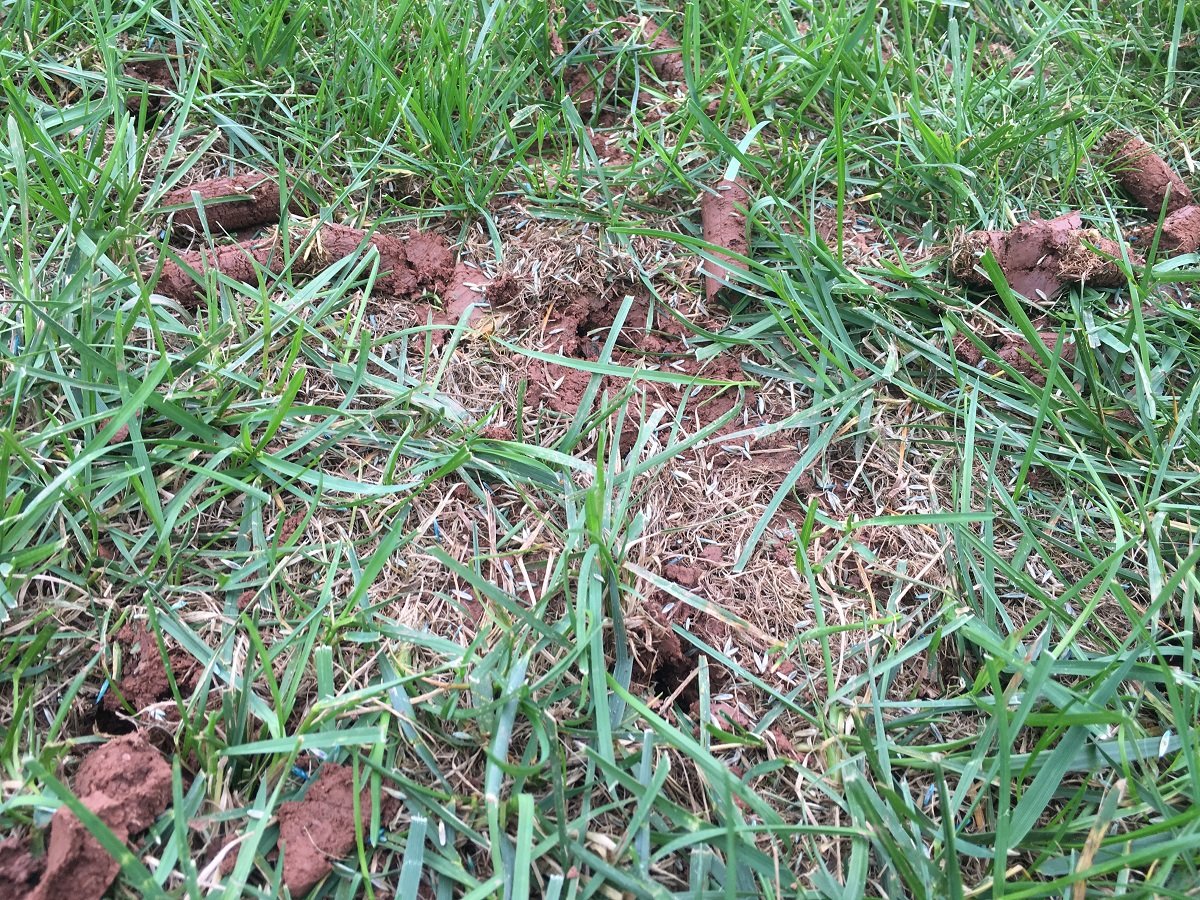
While we know that sometimes homeowners just toss some seed down on a bare spot, the chance of this germinating is a lot lower than had you performed aeration first. Most of the time, that seed will just sit atop the compacted soil and dry out. Or, it might become an expensive bird seed.
If you truly want to get the best results, it’s worth pairing this service with lawn aeration. It’s also important to choose the right seed, which we will discuss as well.
Why is Lawn Overseeding Important?
While lawn aeration is going to help break up compacted soil, it’s the application of the grass seed itself that will allow new grass to grow. This is really important when it comes to filling in bare spots and growing a thicker, healthier lawn.
In terms of the benefits of overseeding a lawn, people usually understand that filling in bare spots is important. But they don’t always think about the fact that introducing new cultivars of grass to the lawn is also important when it comes to building the lawn’s overall health.
We’ll talk in more detail about grass type but the key is to continually introduce new and improved grass types to the turf in order to build its resistance to problems and grow an overall healthier lawn.
What Seed to Use for Overseeding a Lawn
The type of seed that you use is important when overseeding a lawn as it will directly impact the results.
Of course, if you go to the local hardware store, you’ll see there are a lot of choices in front of you. Choosing grass seed can actually be a bit more complicated than people tend to realize.
A lot of times the grass seed that can be purchased from big box stores uses a lot of filler. It could also be a very low-grade seed. Seed is evaluated by independent laboratories for how much of it will actually germinate when you plant it. It could be you’re buying a bag of seed which only 75% will grow in the first place.
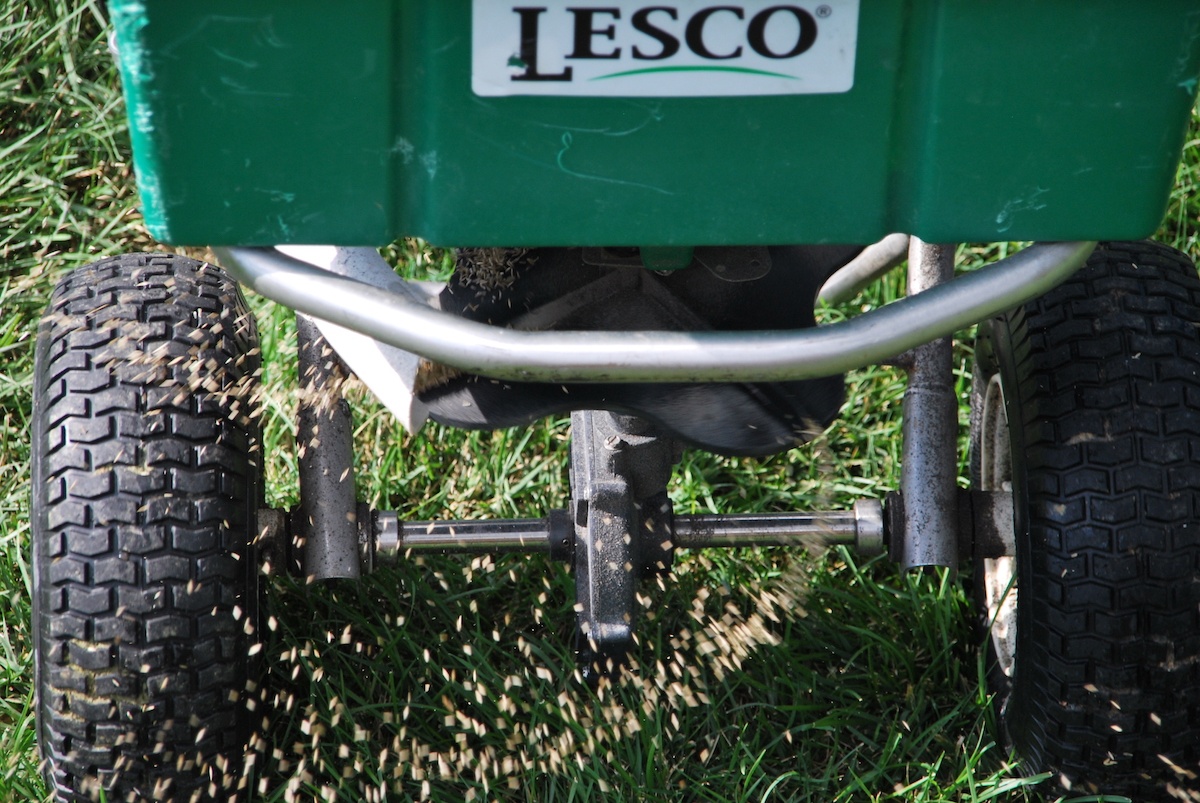
At Joshua Tree Experts, we use grass seed that has been determined to work well in local soil conditions. It is also drought-tolerant and is lower maintenance than a lot of other seed types.
The Best Time to Aerate and Overseed Your Lawn
The timing of lawn aeration and overseeding is also critical to your success. As with many lawn care services, getting the timing right can make a big difference in your results.
When to Overseed YOur Lawn
The best time for lawn aeration and overseeding is in the fall when the conditions are optimal for your new grass to thrive.
A lot of people do not realize that new grass seedlings are quite fragile. This means that they can easily dry out in the hot sun. This is why we advise against seeding in the Spring.
But the Fall has all the right conditions to get your new grass growing. The air is getting cooler but the soil is still warm. The ground is also moist. This can help your new grass to germinate and grow strong roots.
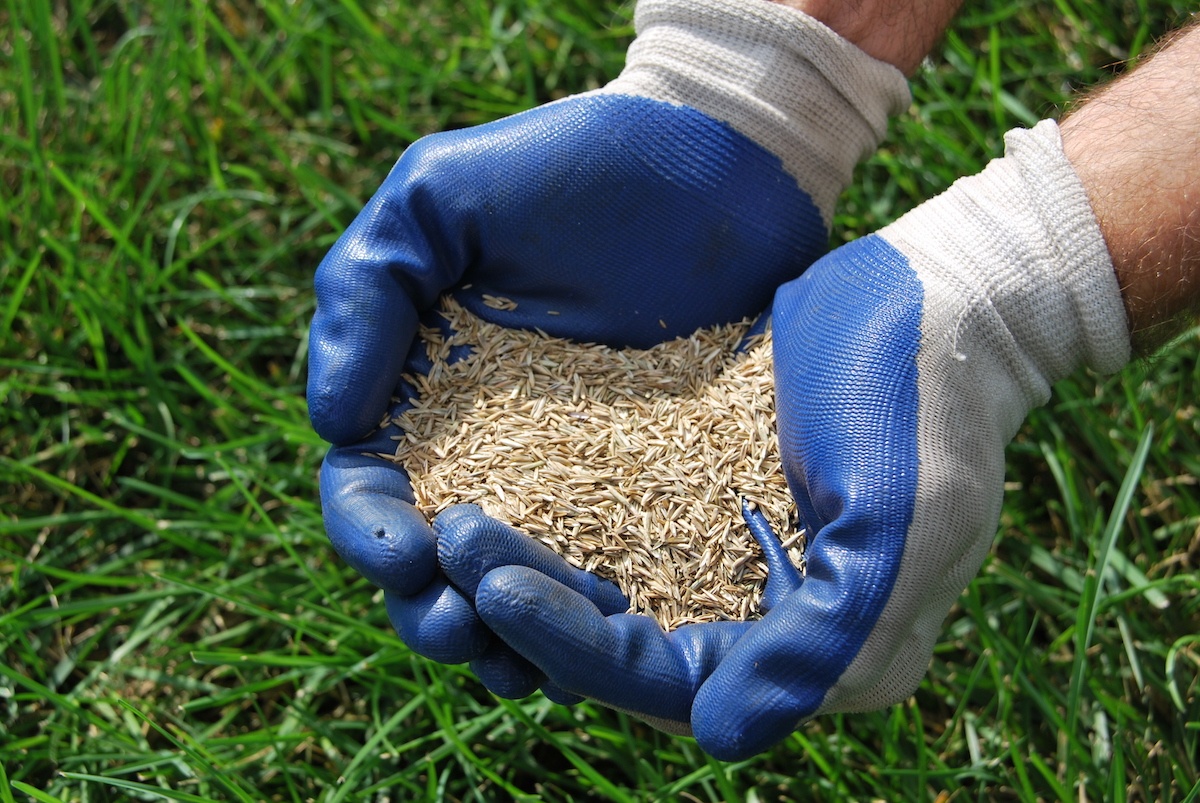
Another reason why it’s not ideal to seed in the Spring is that this is a prime time for weed control. If you seed your lawn in the Spring, we cannot apply crabgrass control. That’s because this product will not know the difference between desired turfgrass and unwanted weeds. As a result, it will prevent both from growing!
When you seed your lawn in the Fall, you will have 8 to 10 months for your lawn to mature before the summer, when it will have to battle tough conditions like drought and heat. This will also allow you to perform important crabgrass control treatments when next Spring rolls around.
DIY Lawn Aeration and Seeding Tips
Sometimes people consider DIY lawn aeration and DIY seeding. These tasks don’t seem like rocket science, so why pay someone to do them for you?
The truth is, that it’s not quite that simple.
Here are some important considerations before you go that route.
The Case Against DIY Lawn Aeration
Performing DIY lawn aeration starts with having to rent an aerator. This can involve some hassles and headaches as you’ll have to go through the process of renting the equipment and getting it to your home (which could also involve renting a trailer if you don’t have a trailer or truck).
Next, you’re going to have to push around a clunky piece of machinery. Keep in mind that a rental is likely not a top-notch piece of equipment. It’s something that’s been used by hundreds and hundreds of people before you (and probably not always properly).
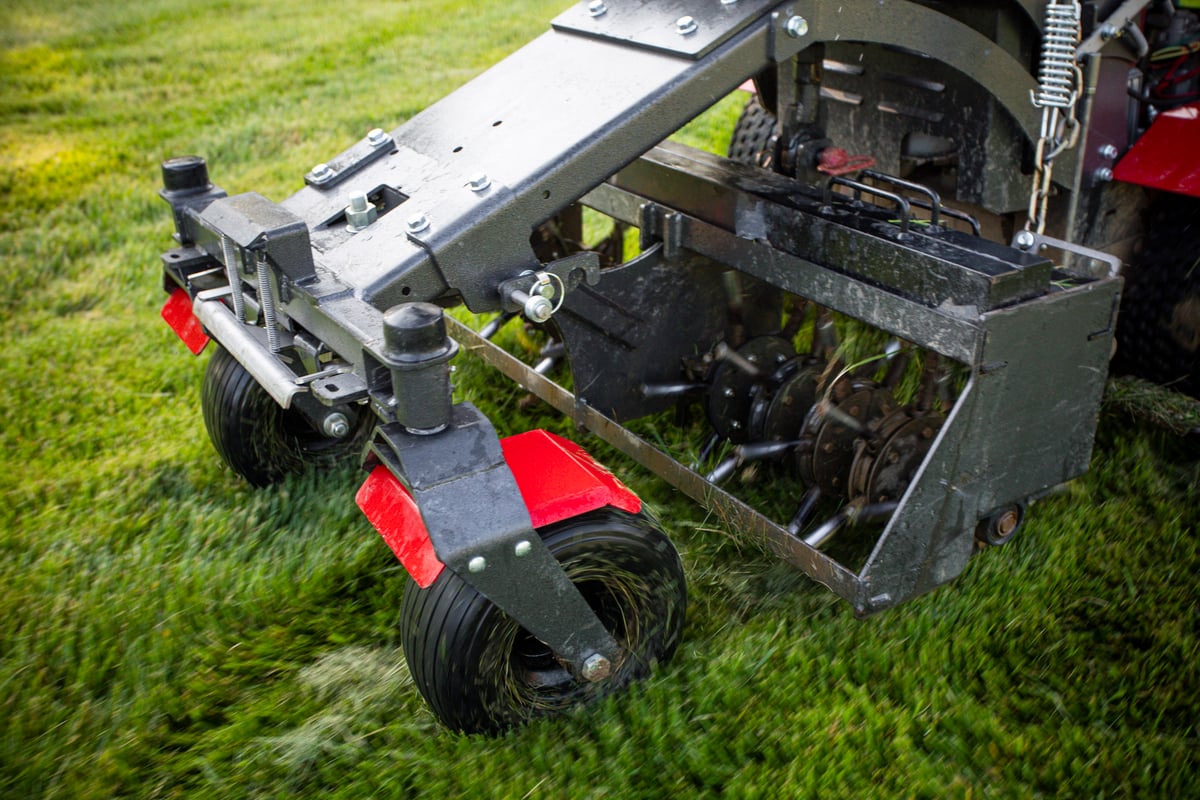
Anytime that you’re operating a piece of machinery you also put yourself at some risk. The last thing that you want is to run into something, hurt yourself, or damage your lawn.
There’s also the fact that lawn aeration can be an exhausting task. Pushing around an aerator can be incredibly arduous and back-breaking work. It’s probably not how you pictured spending your free time.
Finally, there are the results to consider. You’re simply not going to get the best results when you aren’t using top-notch machinery. We also find that homeowners often exhaust themselves before completing the entire yard as extensively as they could (or should) have.
The Case Against DIY Overseeding
We know that overseeding isn’t some overly complicated service. As far as how to overseed a lawn, it’s a matter of making sure that the seed is applied evenly throughout the yard and at the time of aeration (so that it falls into the holes).
But the biggest problem with DIY overseeding is the quality of the seed. As we mentioned previously, putting down low-quality seed can defeat the purpose. You might even have weed seed mixed in with your healthy grass seed.
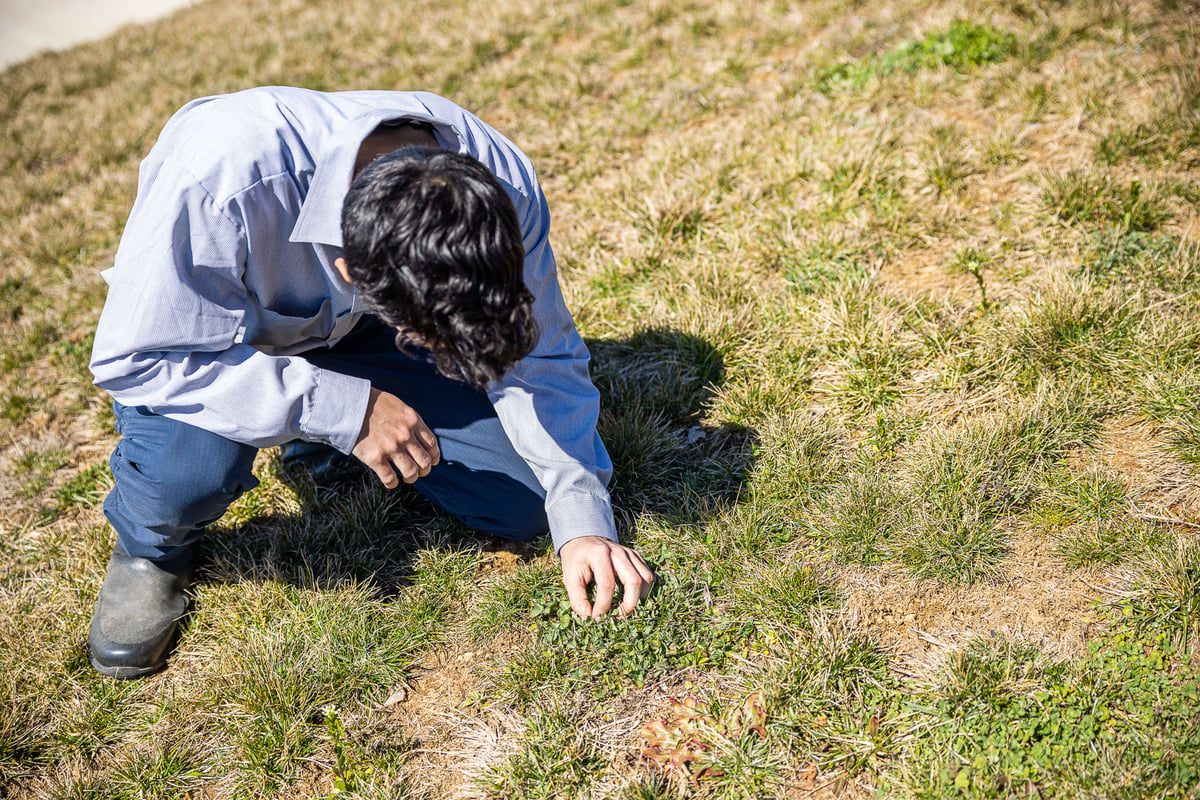
When you work with a pro for overseeding, you’ll get the optimal species for your lawn. This means high-quality grass seed.
You’ll also have your overseeding service paired with professional lawn aeration, which can make a huge difference in your results. As we’ve mentioned before, simply tossing some grass seed down on your compacted lawn isn’t going to yield much in terms of growth.
Hiring a Professional for Lawn Aeration and Seeding
If you’re serious about getting the best results out of lawn aeration and overseeding, then it makes sense to hire a professional.
A professional lawn aeration service is going to use top-of-the-line equipment that helps you get the best results for your investment.
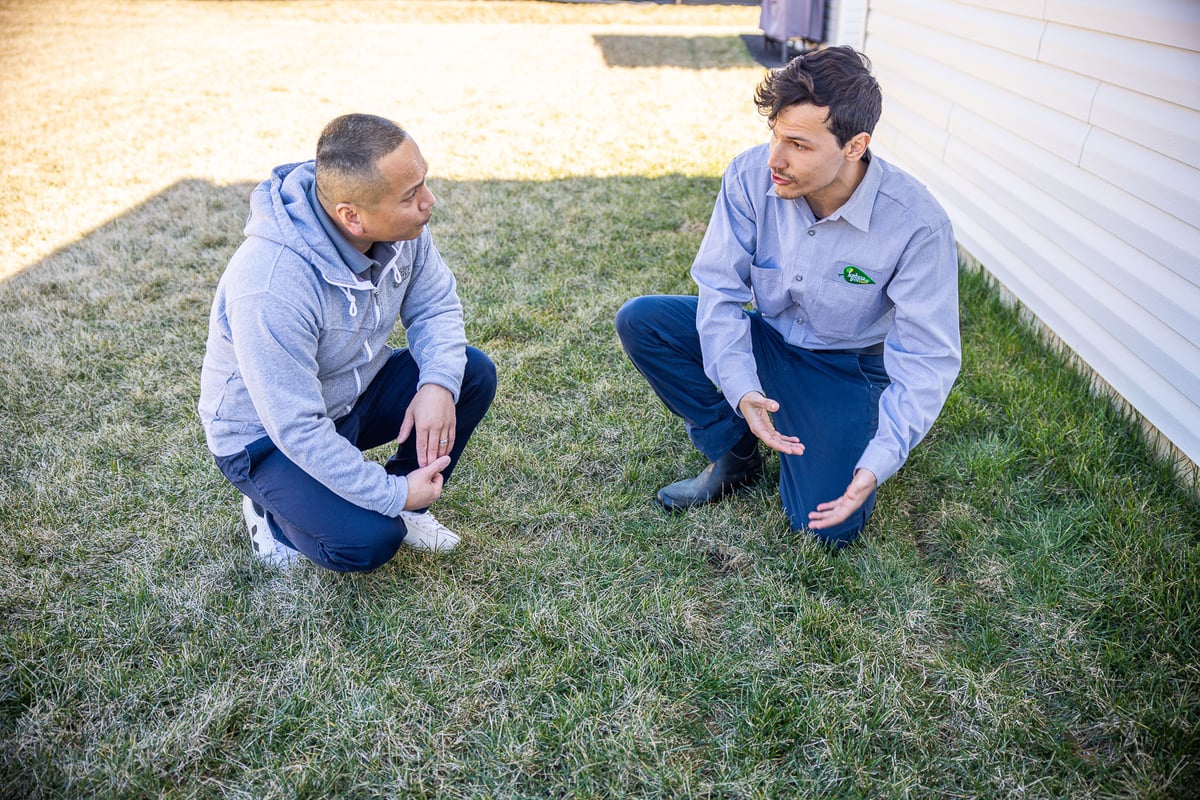
While there are other ways to grow a lawn including hydroseeding, grading and seeding, and sodding, most of the time, lawn aeration is all that you’ll need to get great results. The cost of aeration and overseeding is also significantly less than these other services.
The Benefits of Investing in a Professional Lawn Aeration Service
Some of the benefits of using a professional lawn aeration service include:
- Reduced weed growth: While lawn aeration and overseeding won’t get rid of weeds, it will make them less likely to grow in the first place. That’s because a thick and healthy lawn will naturally choke out weeds and prevent them from growing. Weed control products can also work better on a well-aerated lawn without as much compacted soil.
- Improved fertilization: If you’re hiring a lawn care professional to perform other services like lawn fertilization, you want to make sure that you’re getting the maximum benefit out of those. The looser soil following lawn aeration can make fertilization more effective. The products will be able to penetrate deeper into the soil and have more impact.
- Reduced thatch growth: Lawn aeration can also play an important role in breaking up thatch. Thatch build-up of more than a half inch can prevent oxygen, water, and nutrients from penetrating the soil and reaching the root zone. Plus excessive thatch can make your lawn more susceptible to pest and disease problems.
The Benefits of Investing in a Professional Lawn Overseeding Service
The biggest benefit of investing in professional overseeding is that you'll get high-quality seed that will yield better results.
As we mentioned in our DIY section, the grass seed sold at local hardware stores and big box stores is often lower grade and has a lot of filler. You might be introducing unwanted weeds into your lawn with low-quality seed.
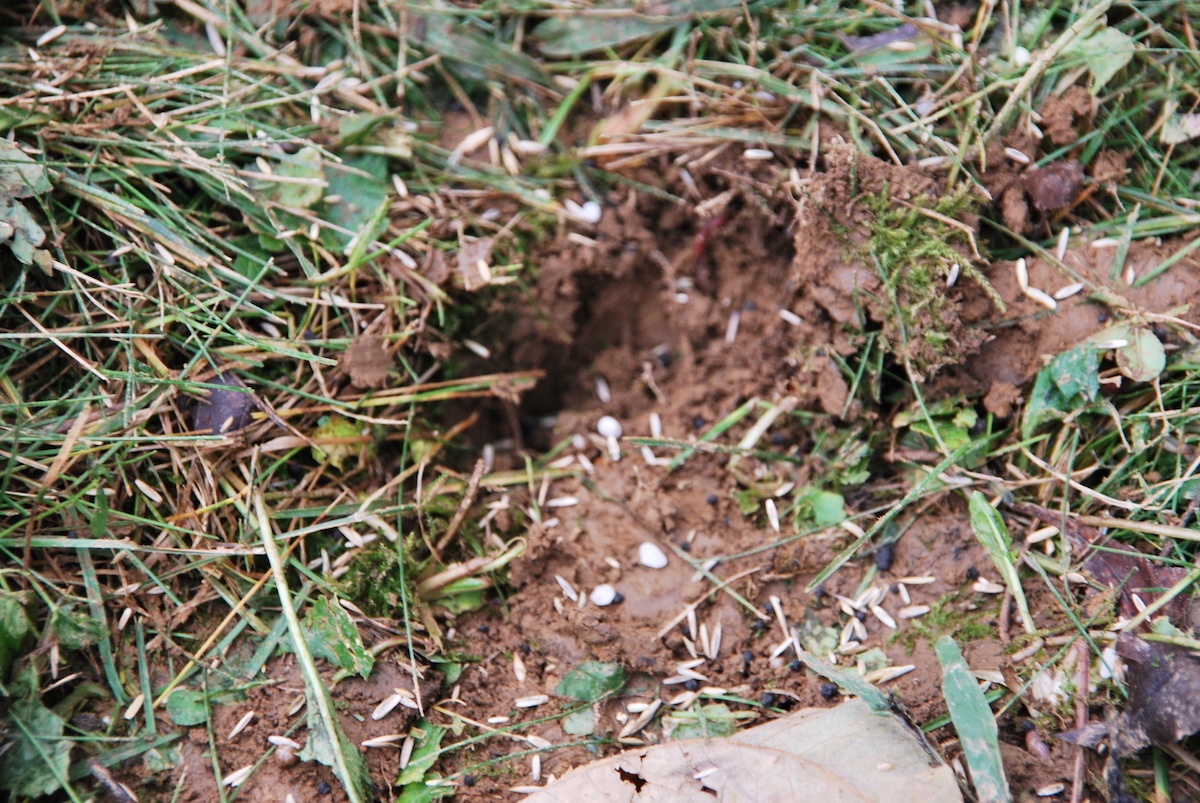
But when you work with a professional, you should be getting higher-quality seed that is better suited to your lawn. At Joshua Tree Experts, we keep up with all the latest research and make decisions about grass seed based on what’s best for our region.
Choosing the Right Lawn Care Service
There are a lot of companies that offer lawn care. At the end of the day, just like any other decision that you’re making, you want to choose a company that you feel confident will deliver the best service and results.
At Joshua Tree Experts, one thing that sets us apart is that we perform a double pass. This means that we go over the lawn two complete times in order to make as many plugs as possible. This will help give you the best results for your investment.
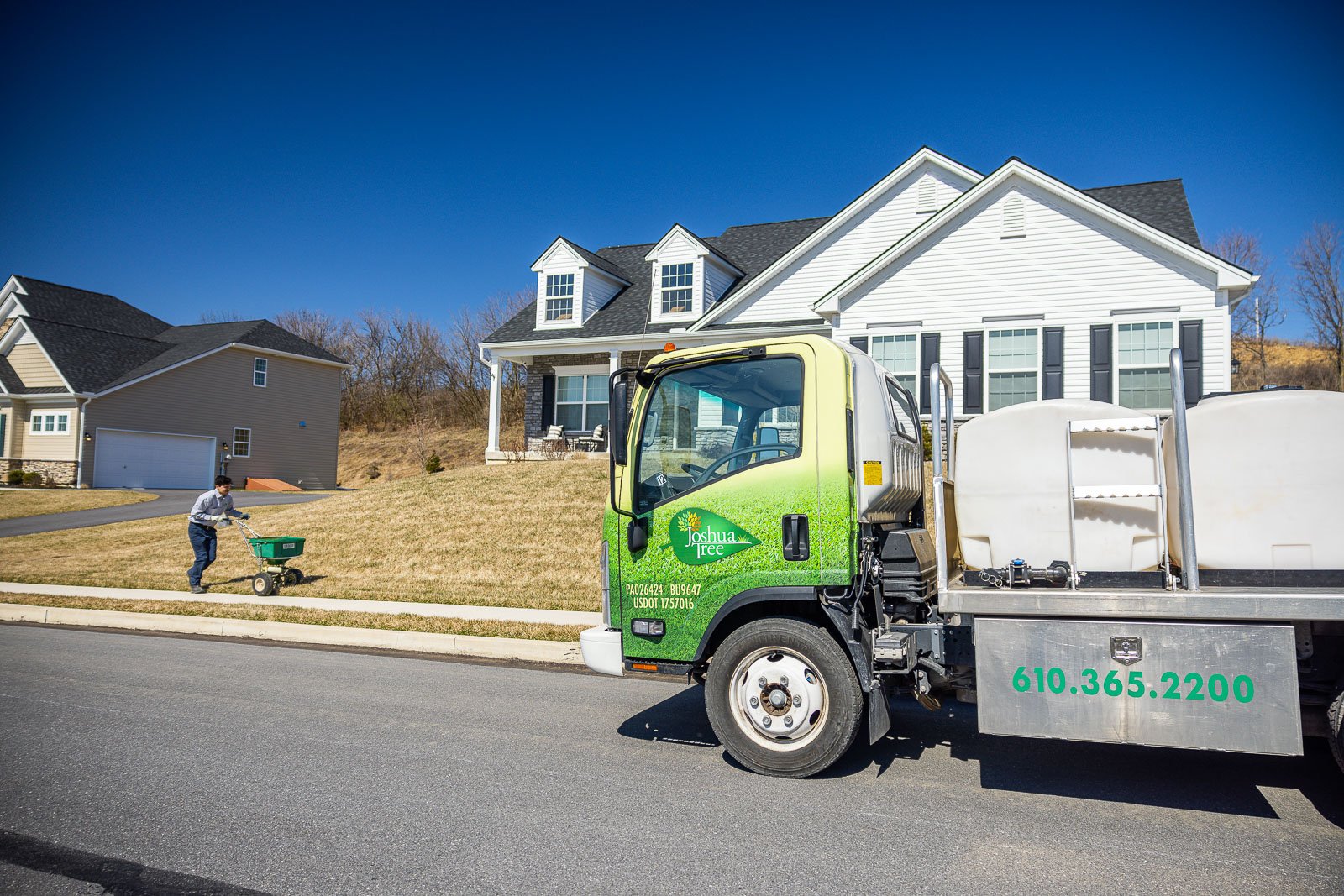
Often, we find that when homeowners try and perform DIY aeration, they’re barely completing one full pass. That’s because this work can be exhausting with a push aerator. But at Joshua Tree, we have invested in highly professional, ride-on aerators so that our technicians can do the best possible job.
Performing a double pass is also something that has set us apart from other lawn care services, as many of them are trying to get the job done as quickly as possible. But with a service as important as this one, you want to make sure you are getting the most possible value out of it.
Lawn Care After Aeration and Overseeding
Now that you’ve invested in lawn aeration and overseeding, you want to make sure that you care for your lawn properly so that your new grass germinates. You don’t want to have wasted your money.
That is why it’s important to know what to do after aeration and overseeding.
Here are a few tips.
When to Mow After Aeration and Overseeding
We typically advise waiting two to four weeks after aeration and overseeding to mow. Mowing can put stress on the lawn and you need to give the roots some time to acclimate first.
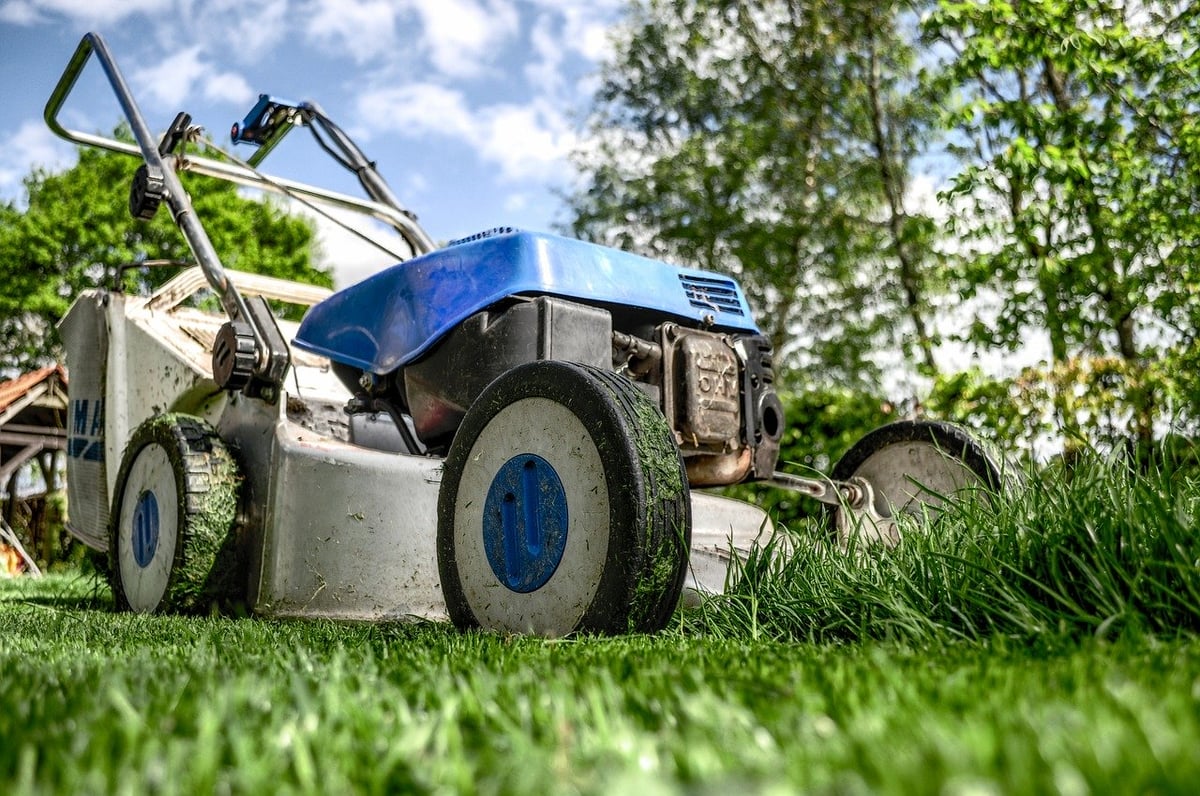
Mowing too soon can also prevent those seeds from dropping (or staying) in the holes that were made during lawn aeration. You really want to leave those seeds undisturbed, giving them time to germinate.
The most important thing that you need to do after lawn aeration and overseeding is water properly, which we’ll talk about next.
How Often Should You Water Your Lawn After Aeration
As we mentioned, watering is the most vital thing that you can do for your newly planted grass. In fact, water will be a necessity in order for your grass to actually germinate and grow. How often to water depends upon what stage your grass is in.
Prior to germination, the key is to keep the seed moist. During the first couple of weeks, you do not want to completely drench the seed but it should definitely remain consistently moist so that it does not dry out. We typically recommend watering a couple of times a day for about 15 to 20 minutes at a time.
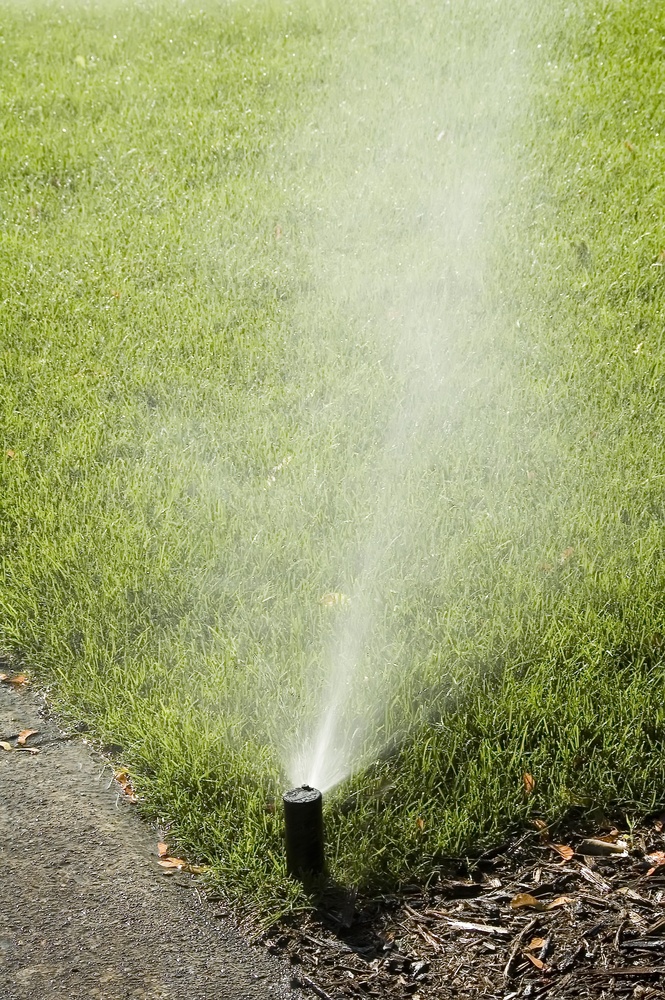
Once the seed has already germinated, you’ll be able to water less often but will need to deliver more water so that it penetrates deeper into the soil where the roots are developing and growing. Typically this would mean around 45 to 60 minutes a few days a week. You want to make sure that water is reaching several inches beneath the surface to drive root growth.
As your grass matures during that first year you can start to back off. But it’s important to know that new grass is more prone to drought damage because the roots are not as deep. Make sure that your grass is receiving approximately one to two inches of water every week. The hotter it is, the more water your lawn will need.
Working with a Lawn Care Professional
We know that your new lawn is important to you. That’s why working with a lawn care professional can help take some of the burden off of your shoulders. They can help you make the right decisions so that you are getting the best possible results.
At Joshua Tree Experts, we want to be your partners in lawn care.
We know that you care about the investment you’ve made in your lawn, but you don’t always have all the answers when it comes to what it needs. That’s why we’re always available to answer questions after we’ve completed a lawn aeration service (or any other service for that matter!).
We hope that this guide helped to answer some of the questions that you might have had. But if there is anything else that we can assist with, we are here for you. Together, we can achieve the lawn that you’ve been dreaming about.
If you’d like to know more about how Joshua Tree Experts can help meet your lawn needs, or you have more questions, we’re here to help! Get in touch with us to get some free expert advice and learn more about our lawn care program options.
Image Source: Mower



